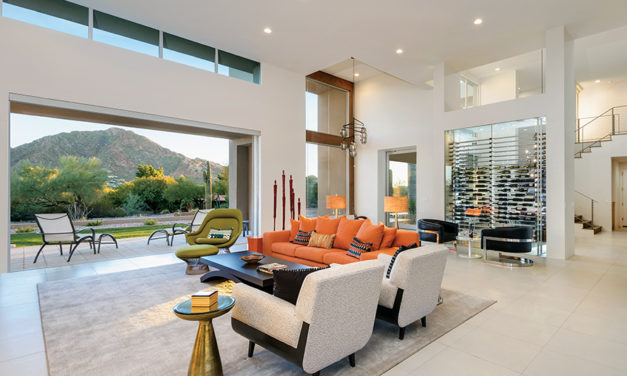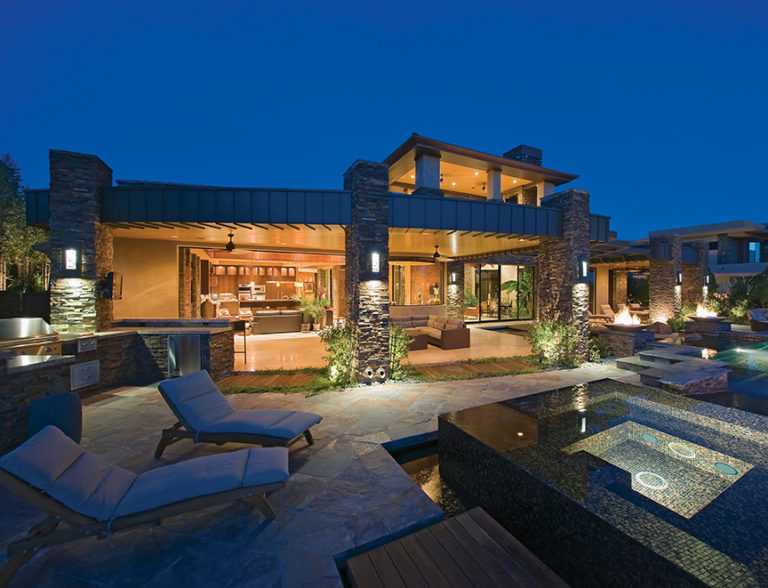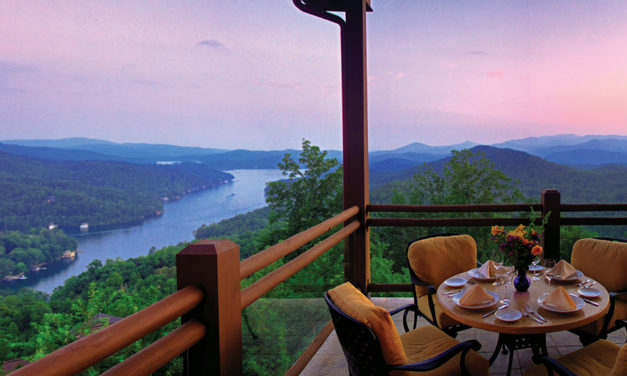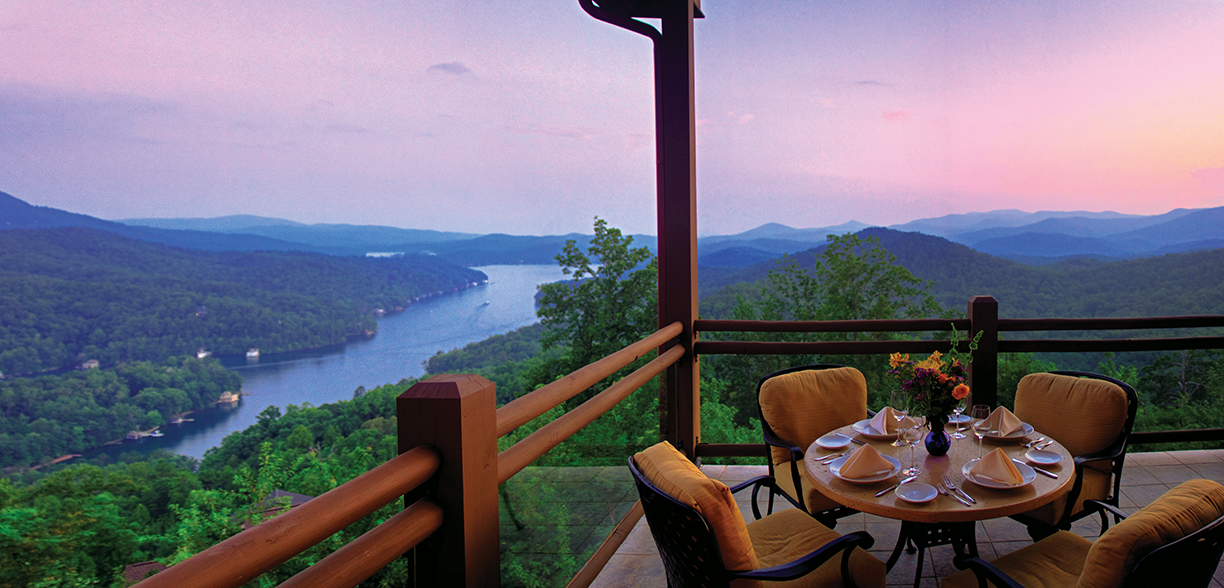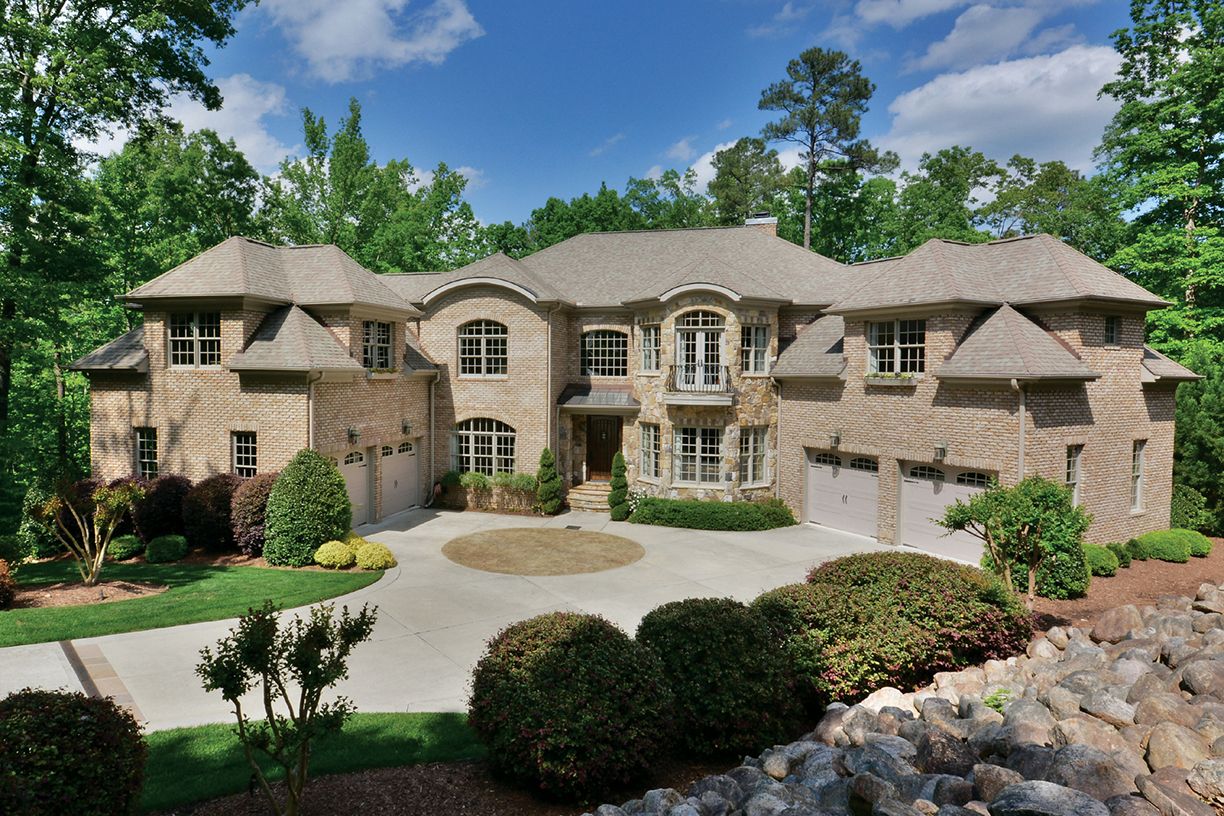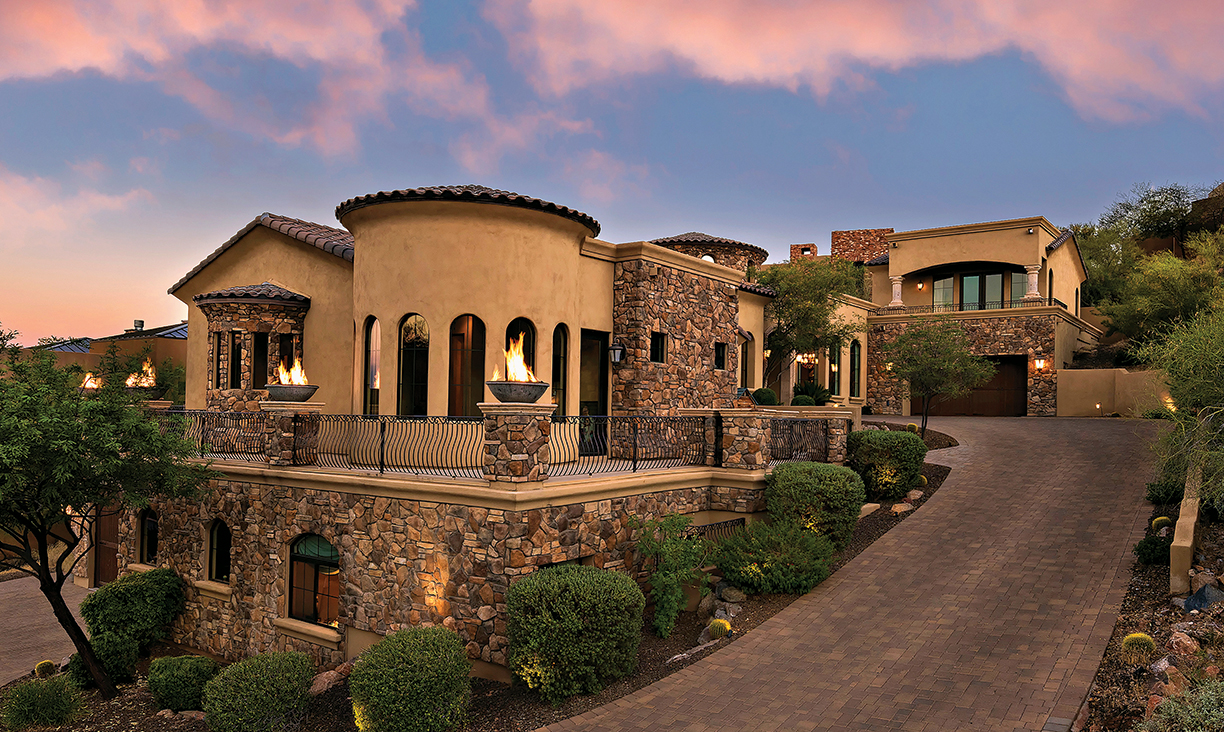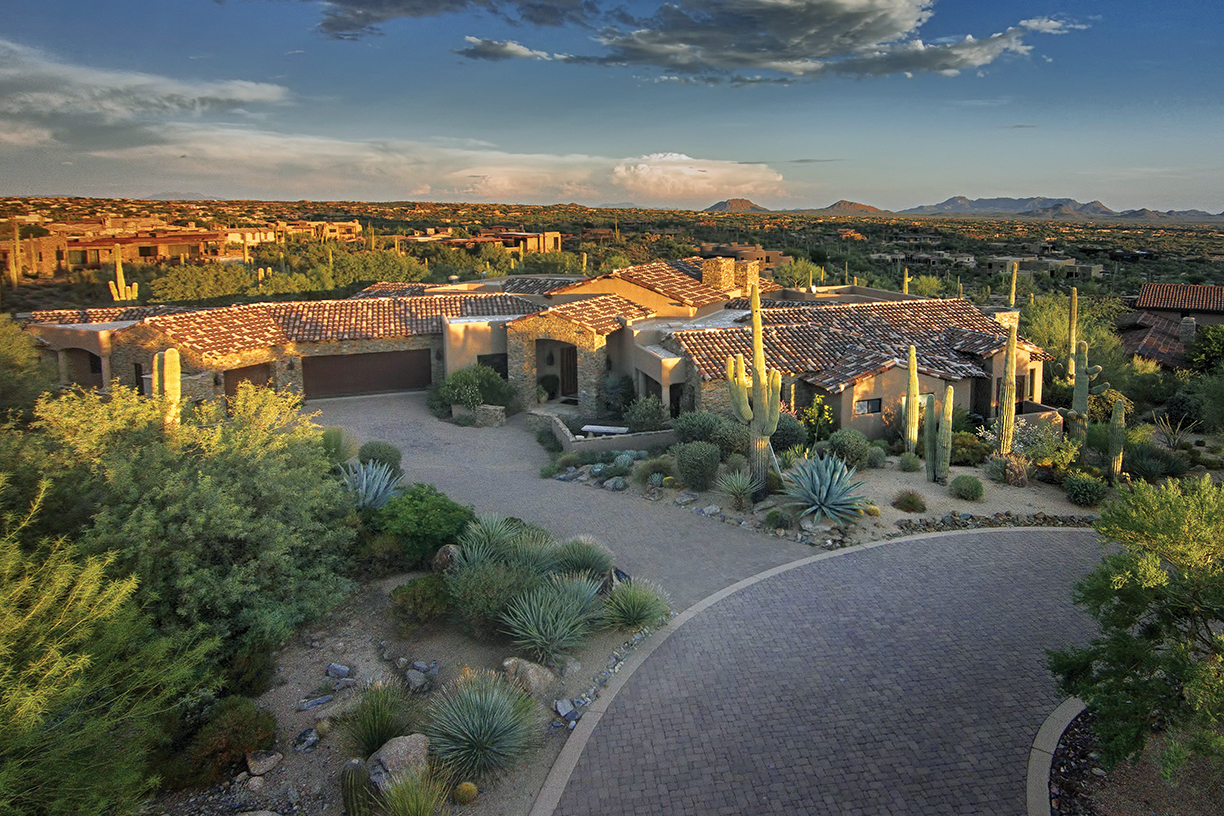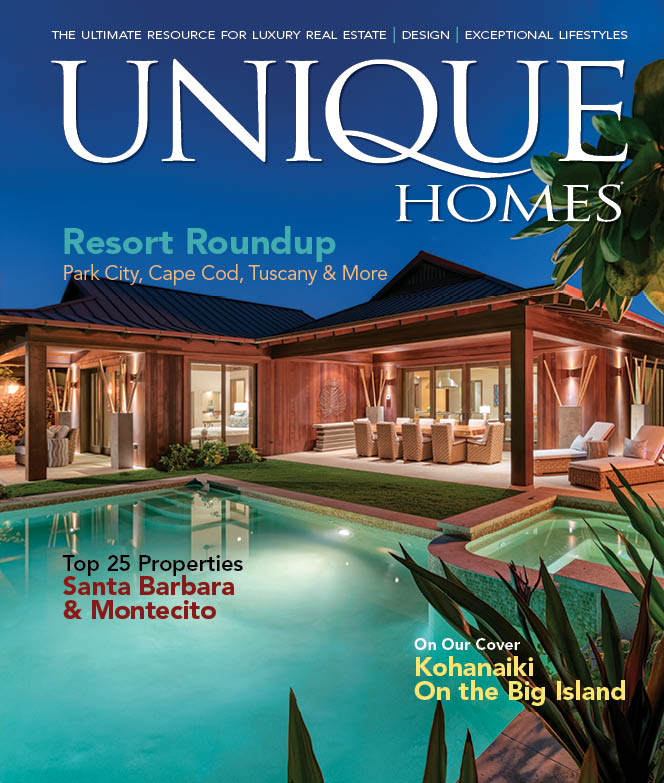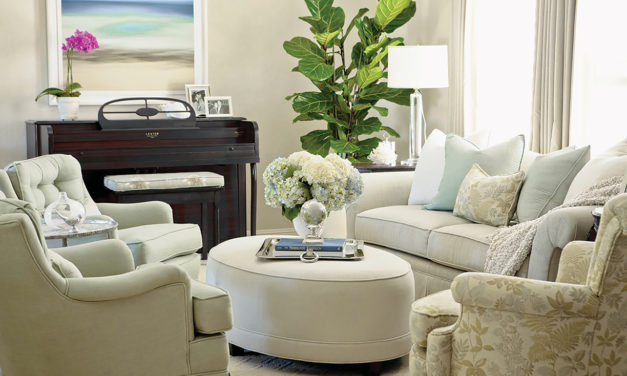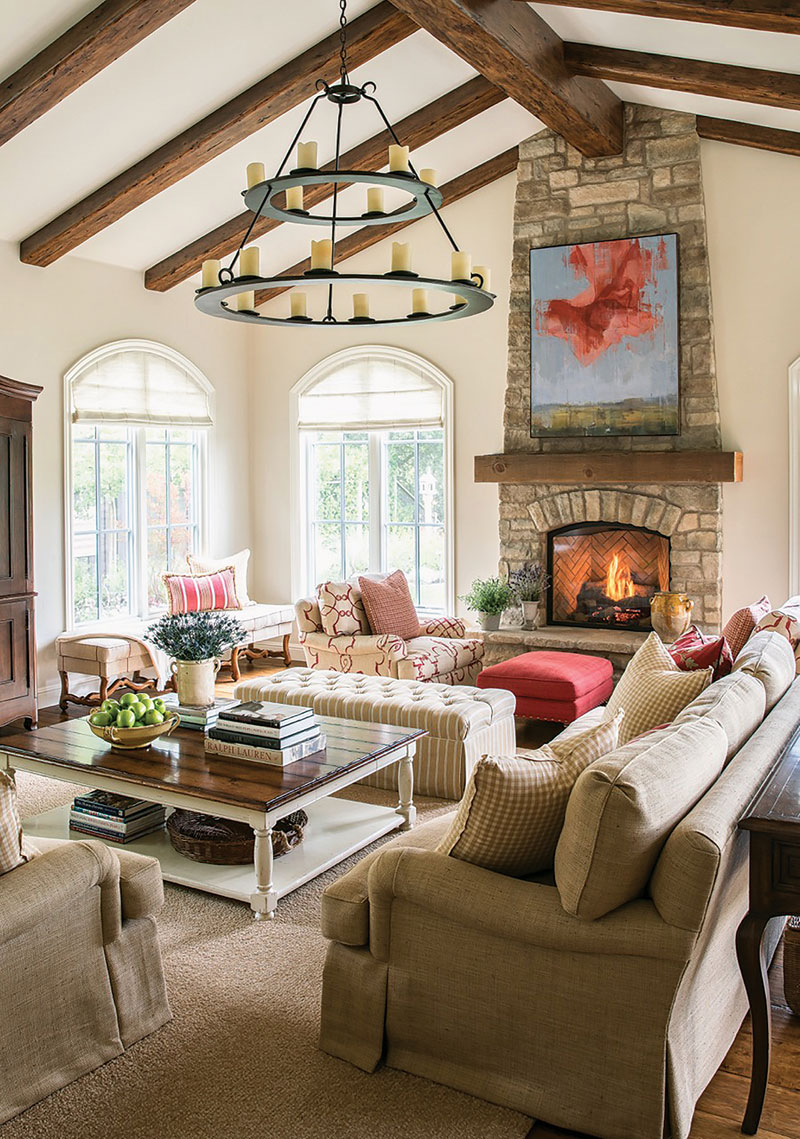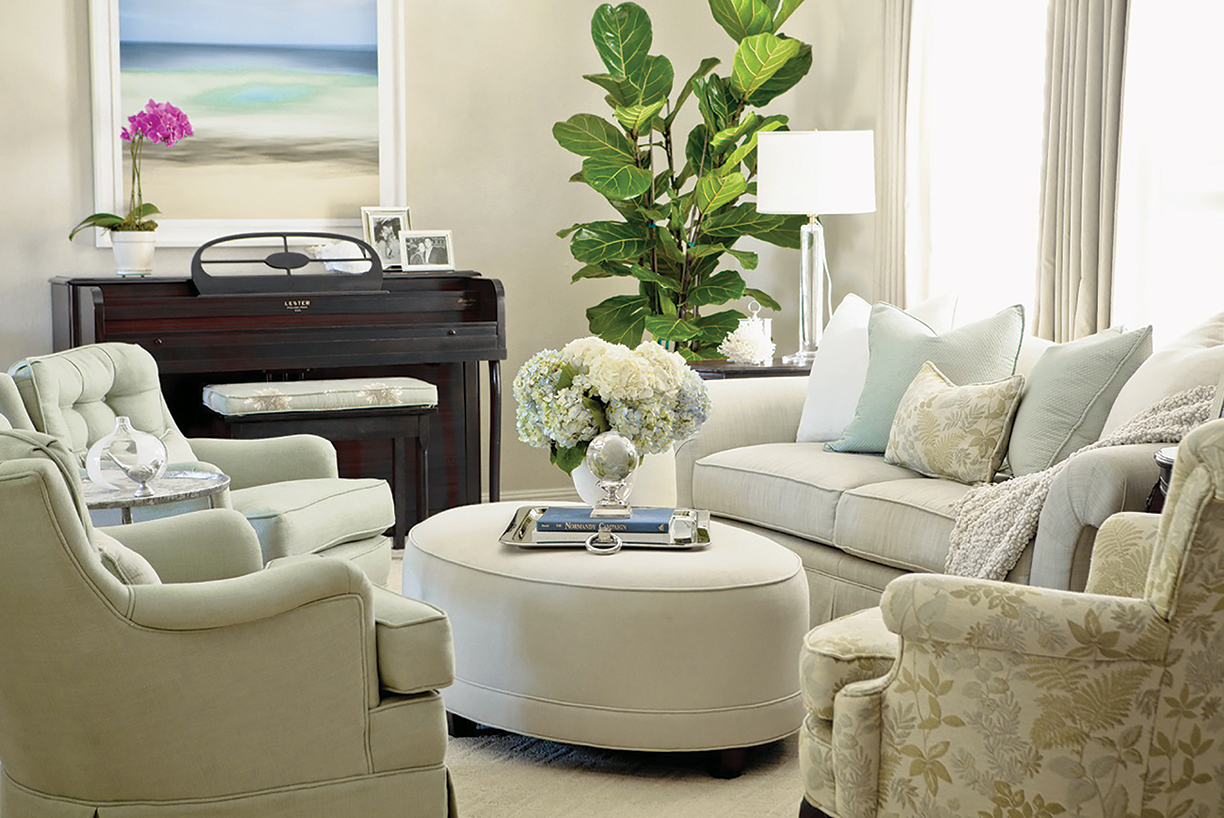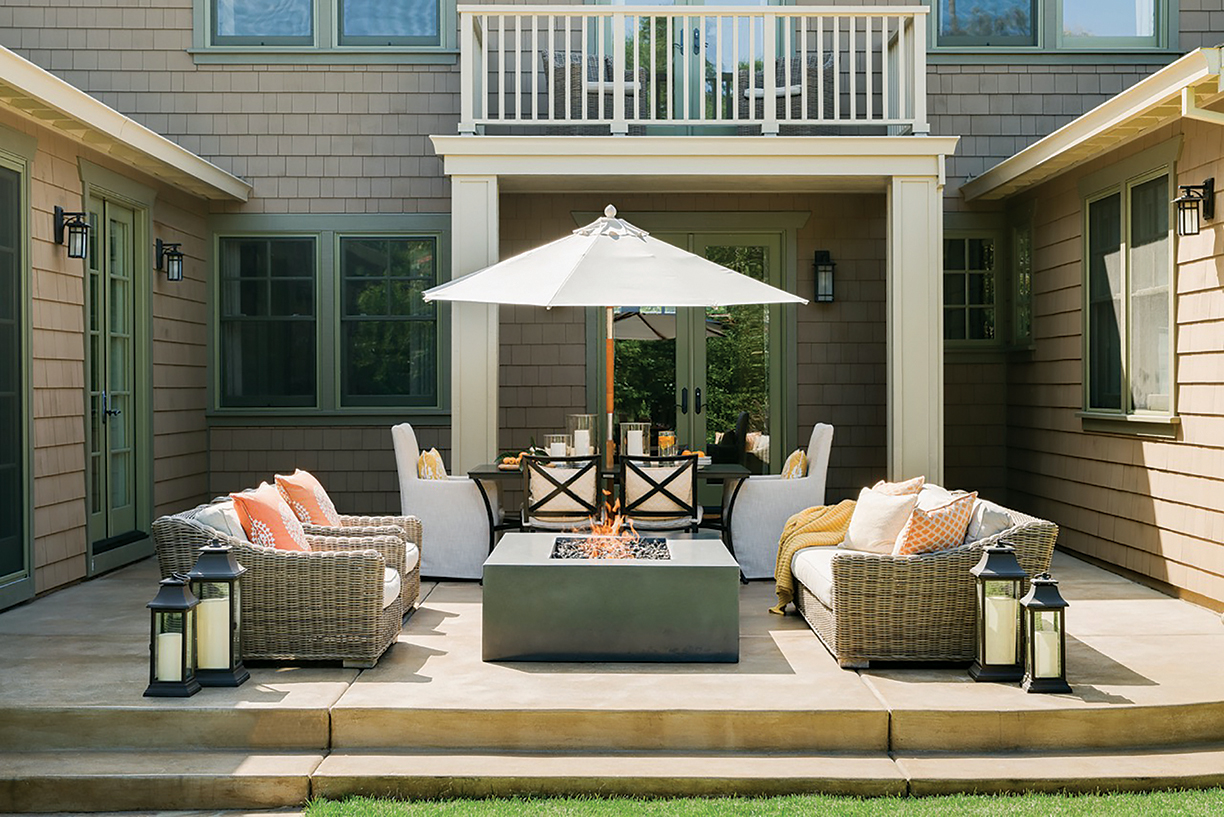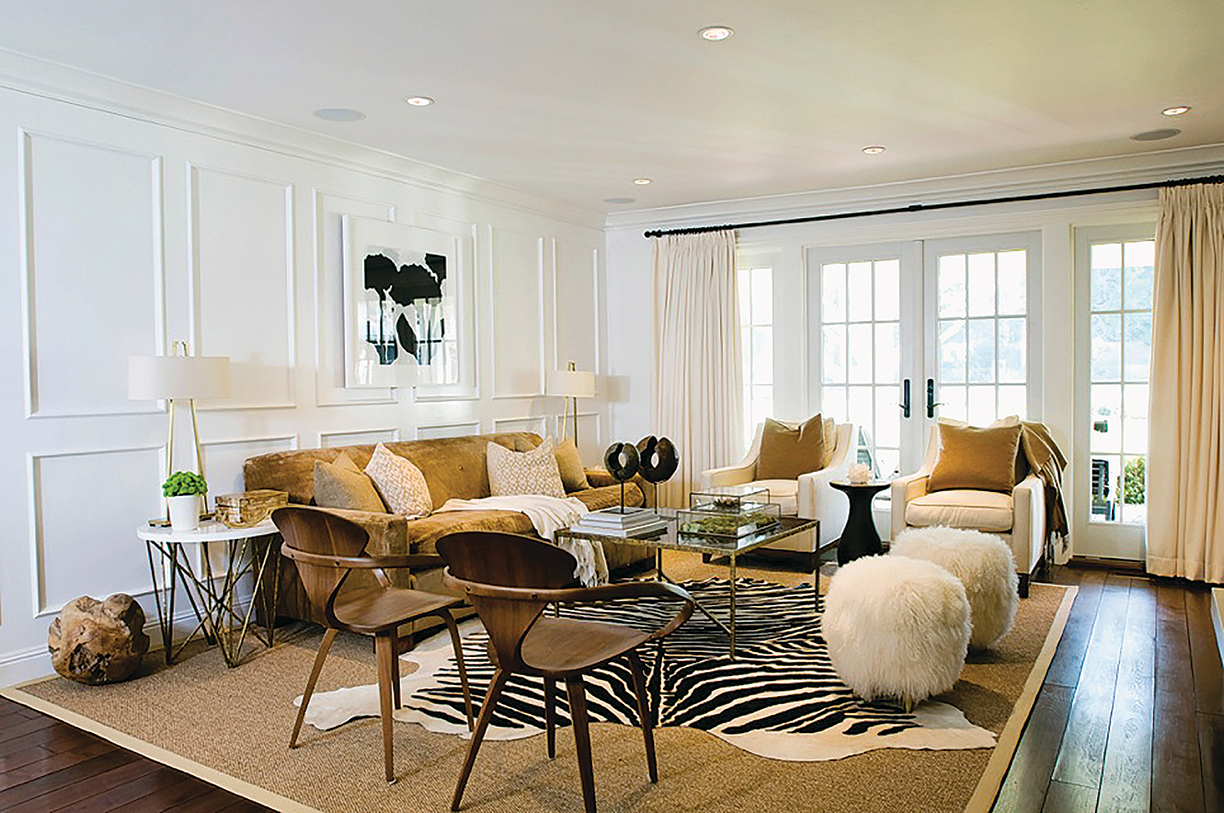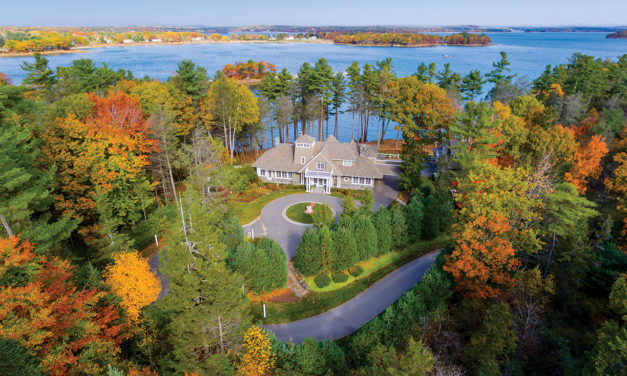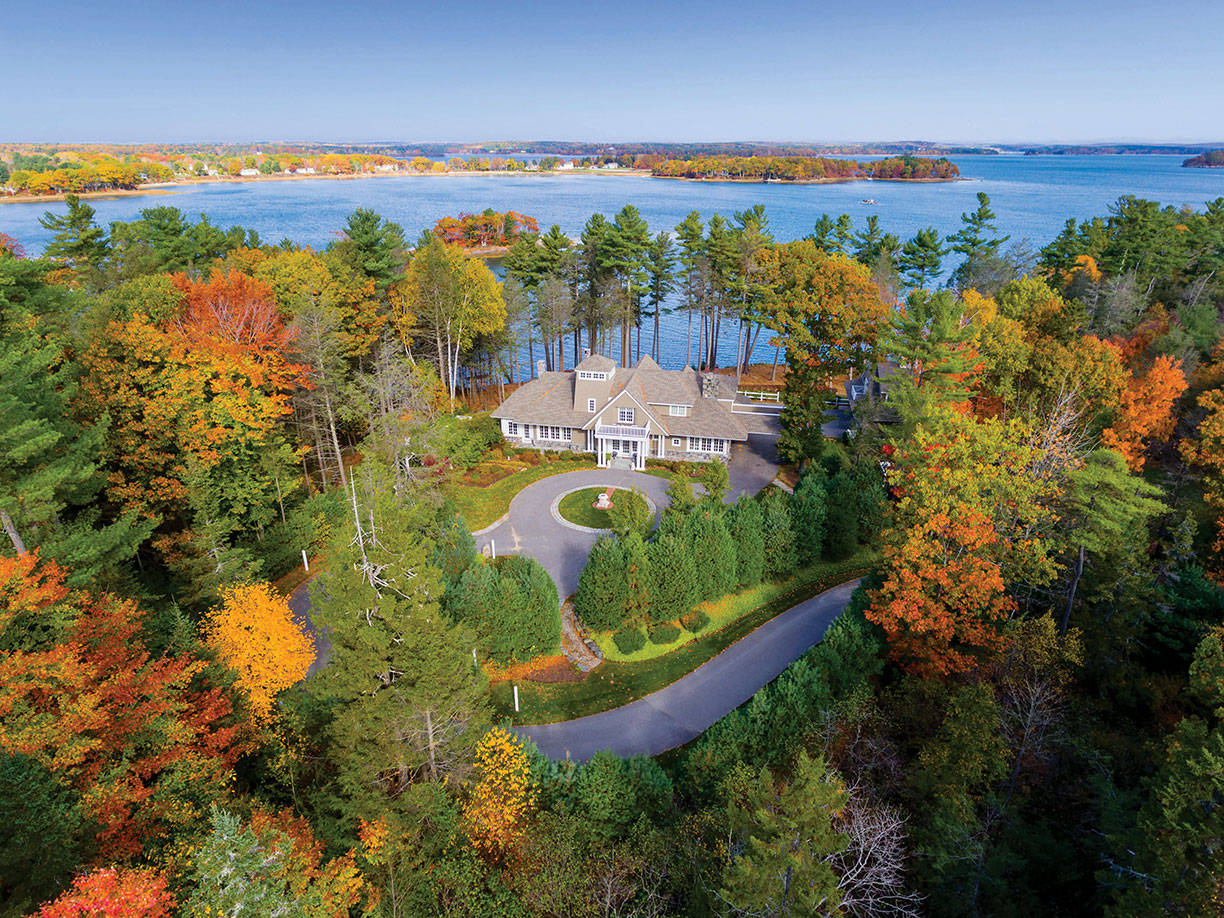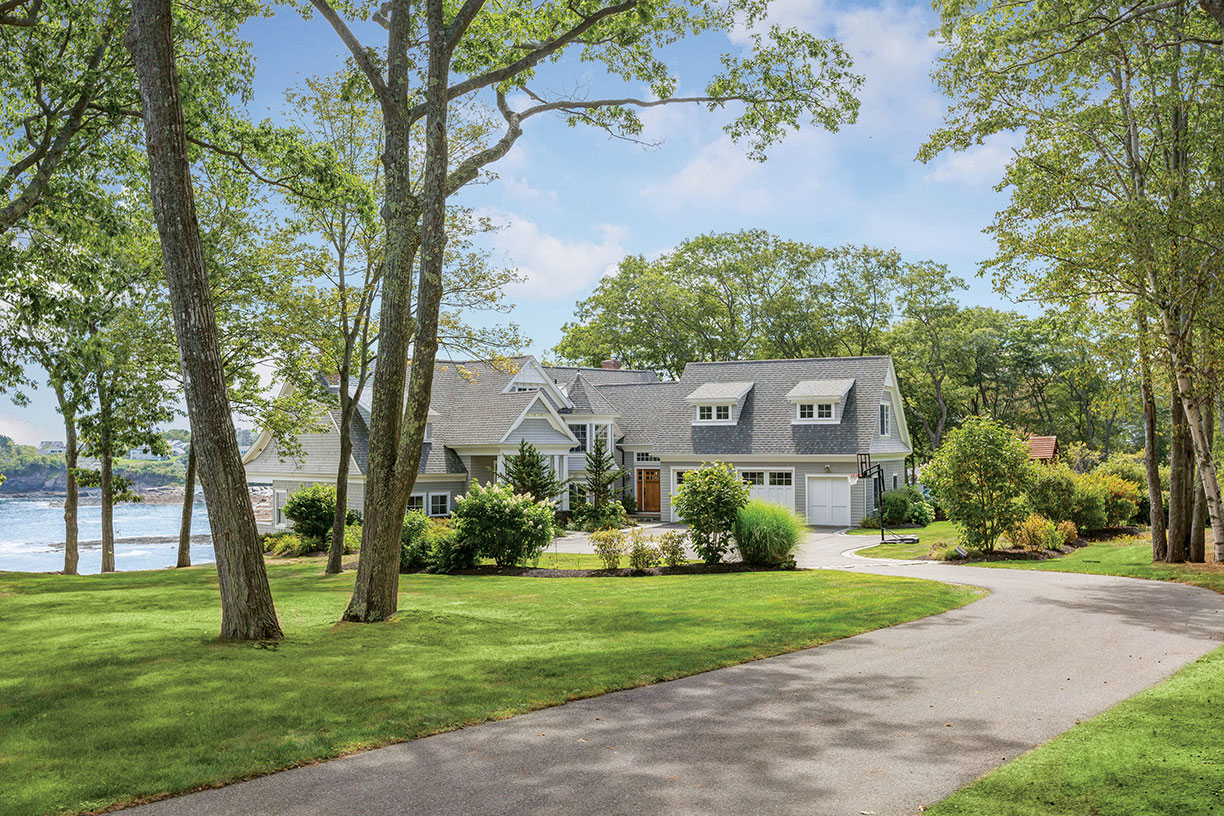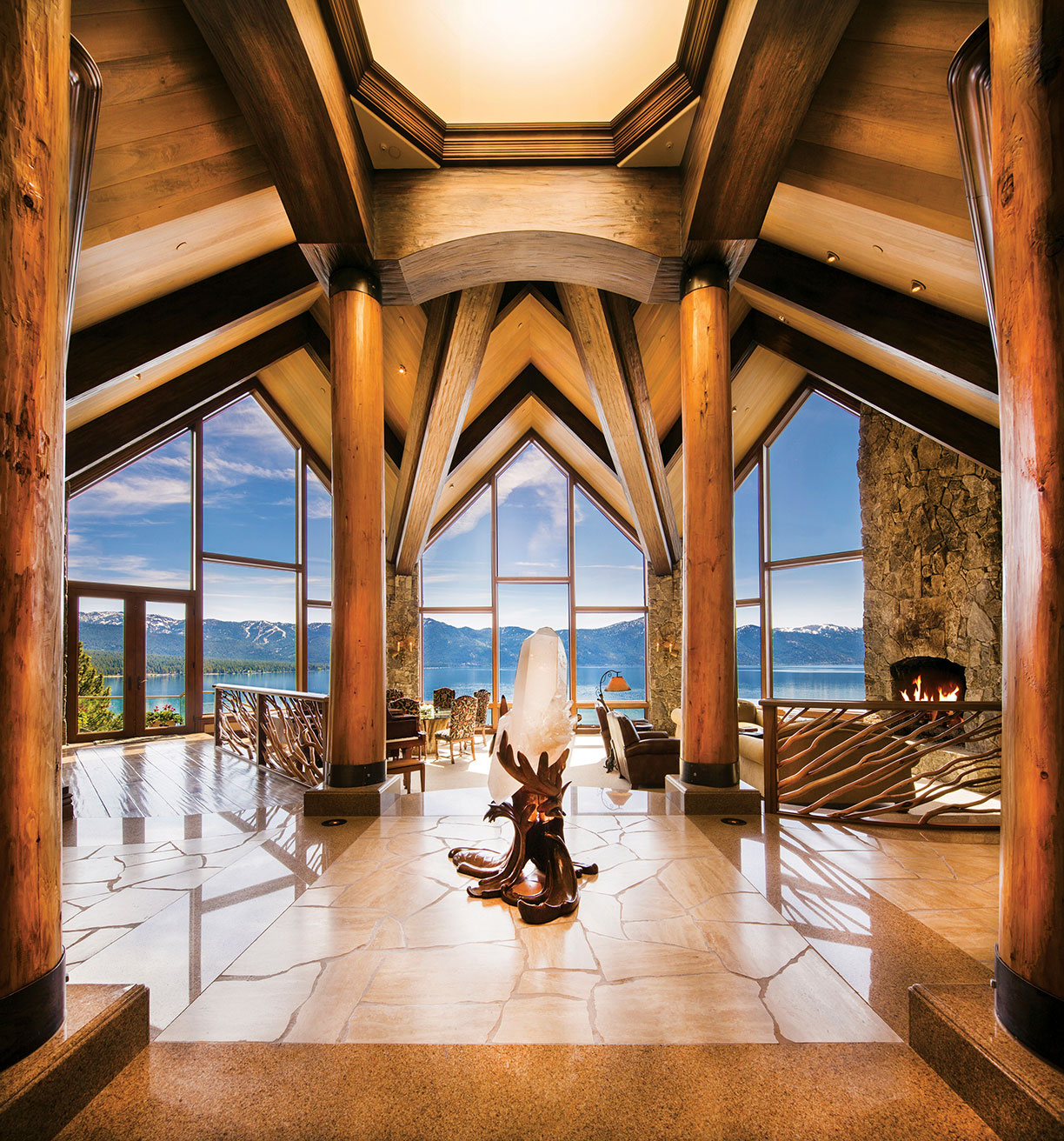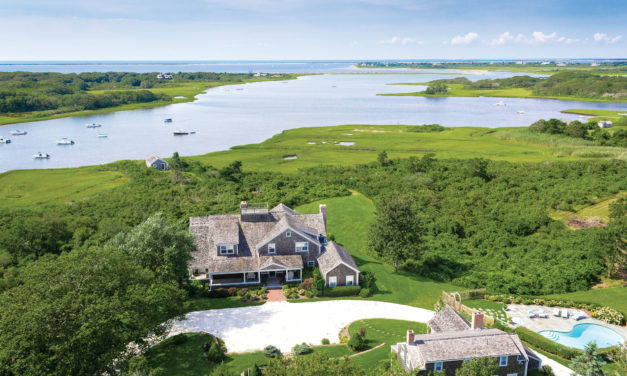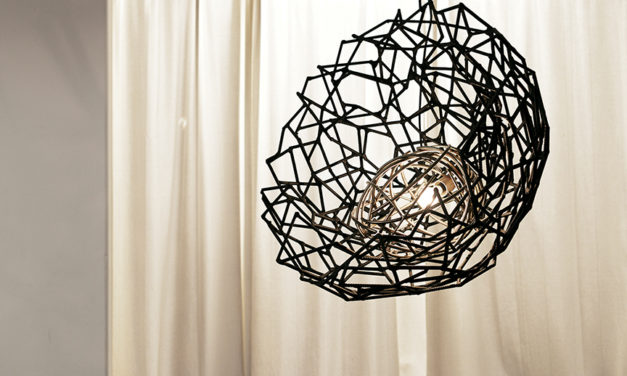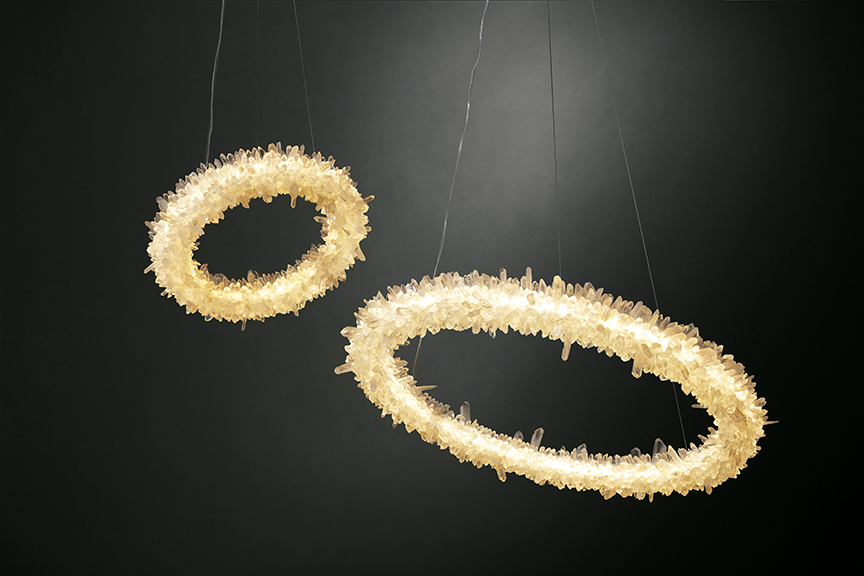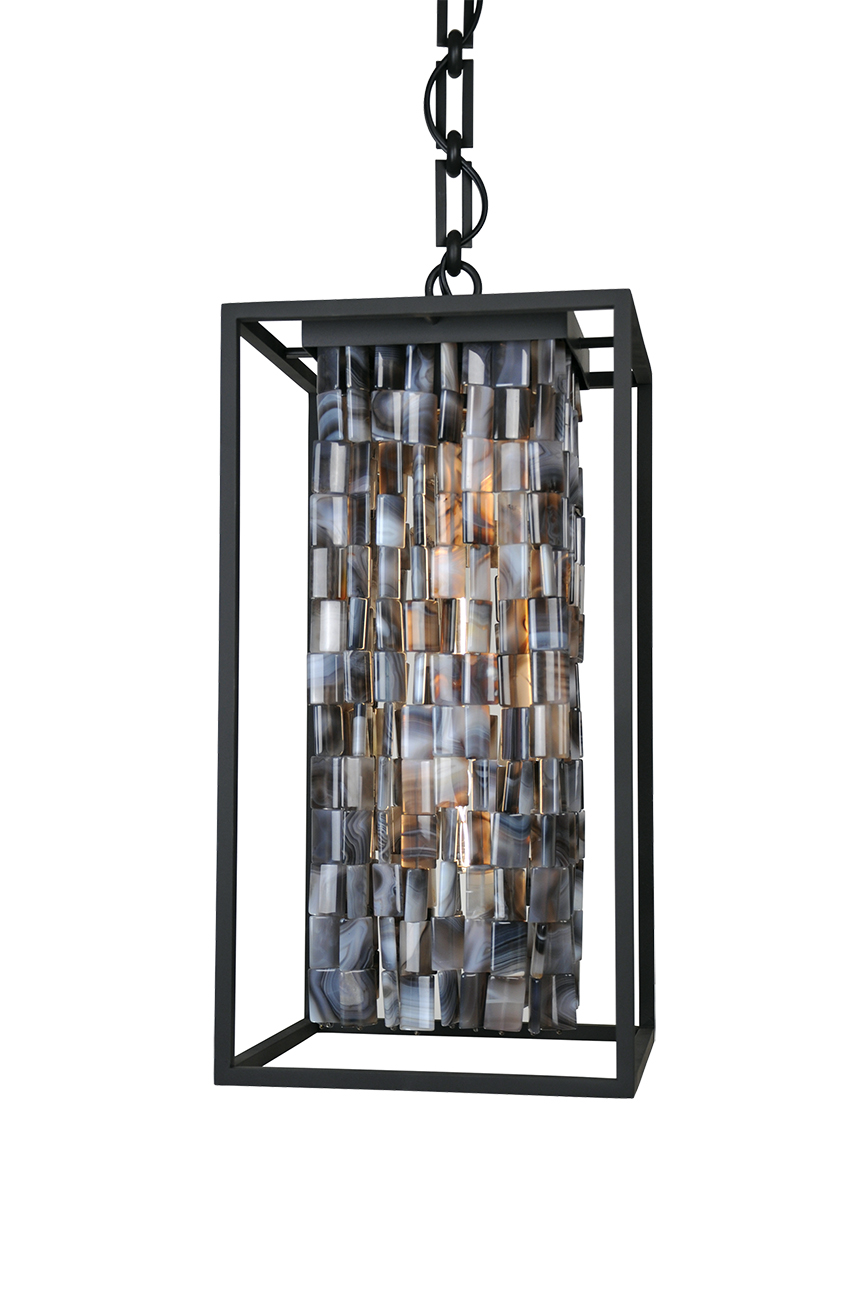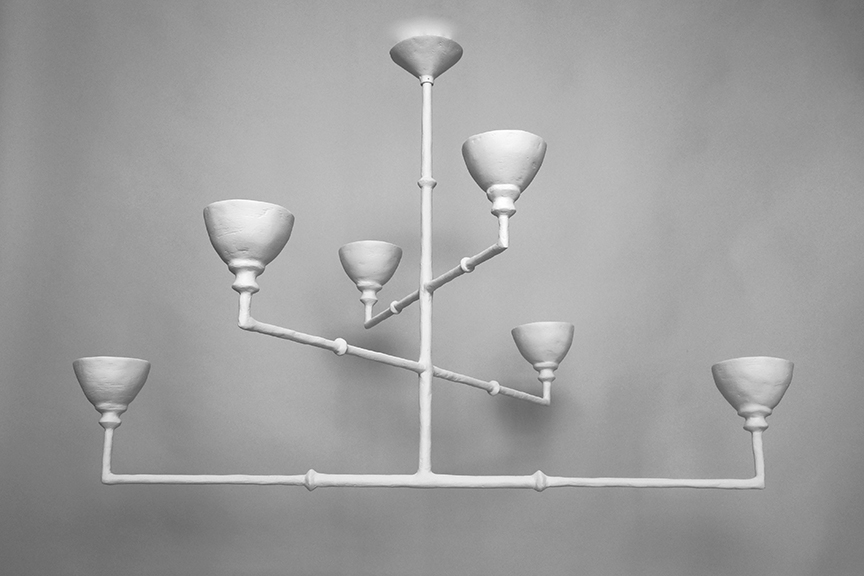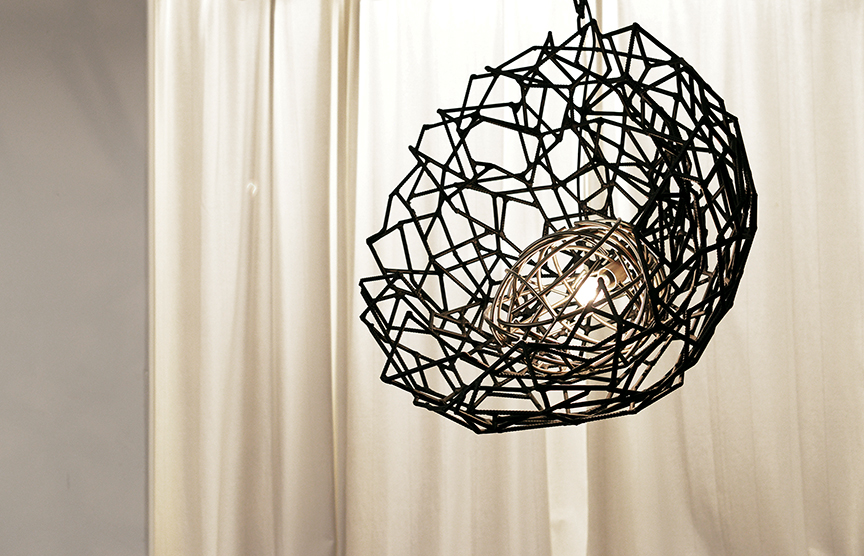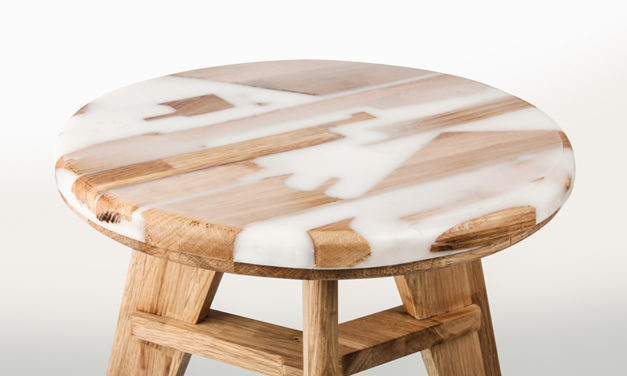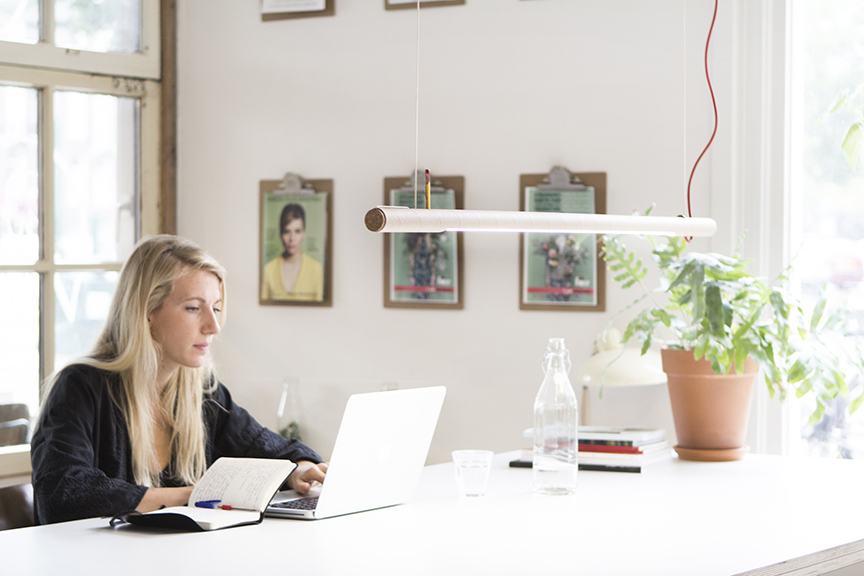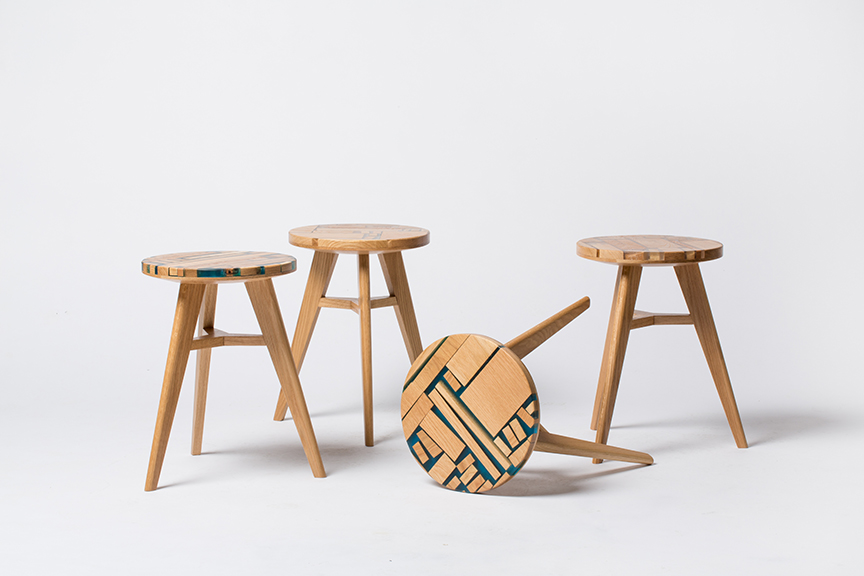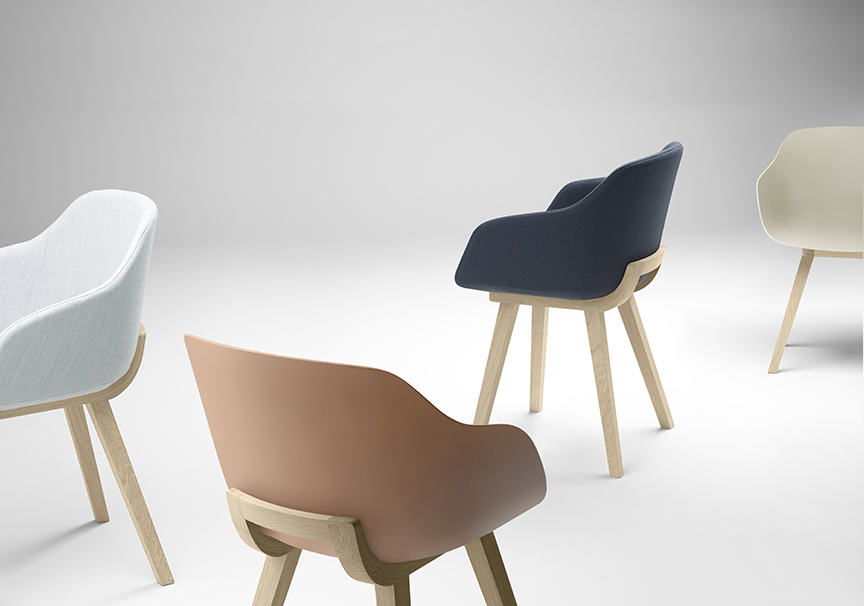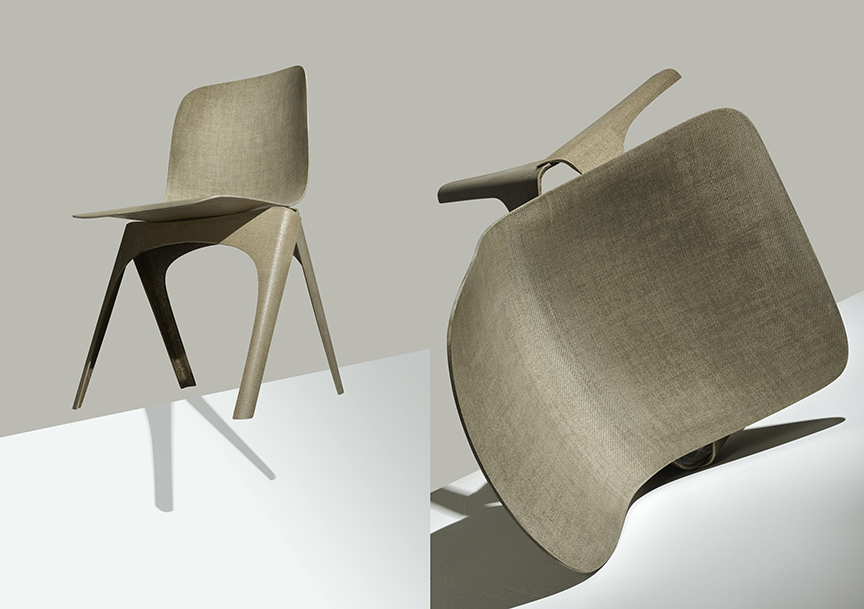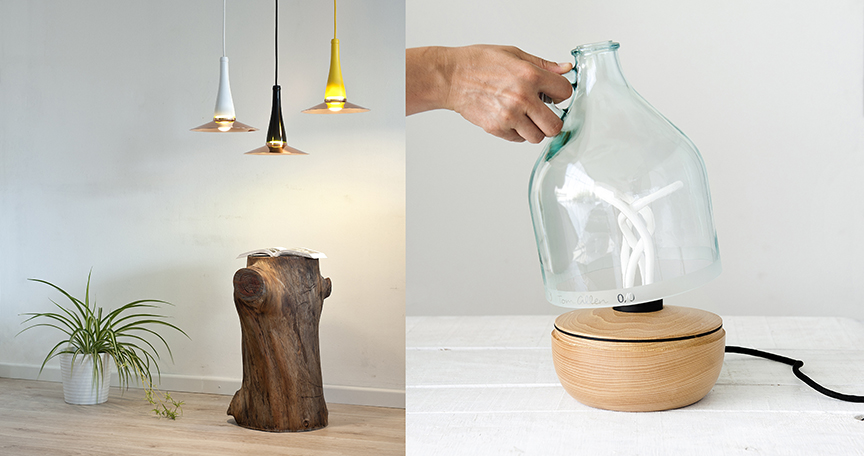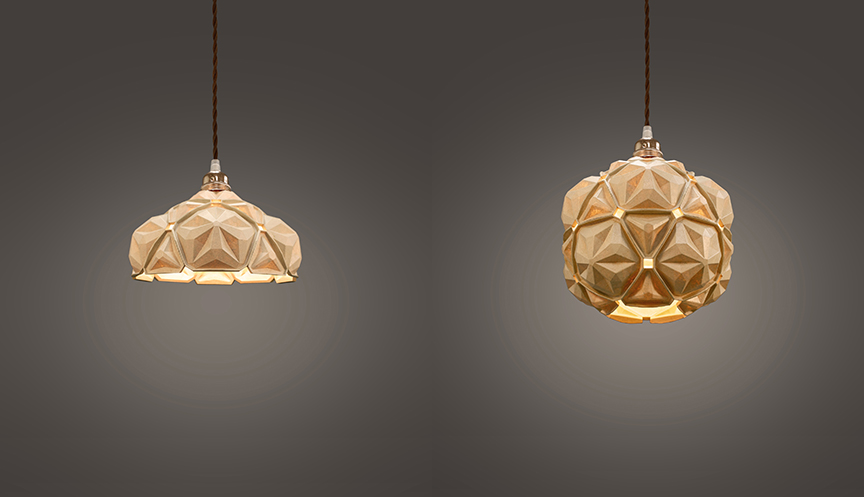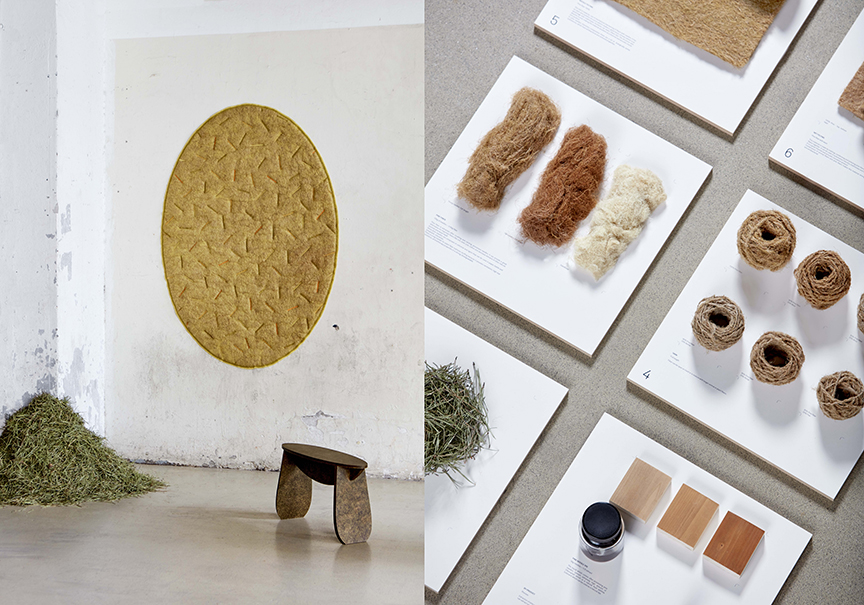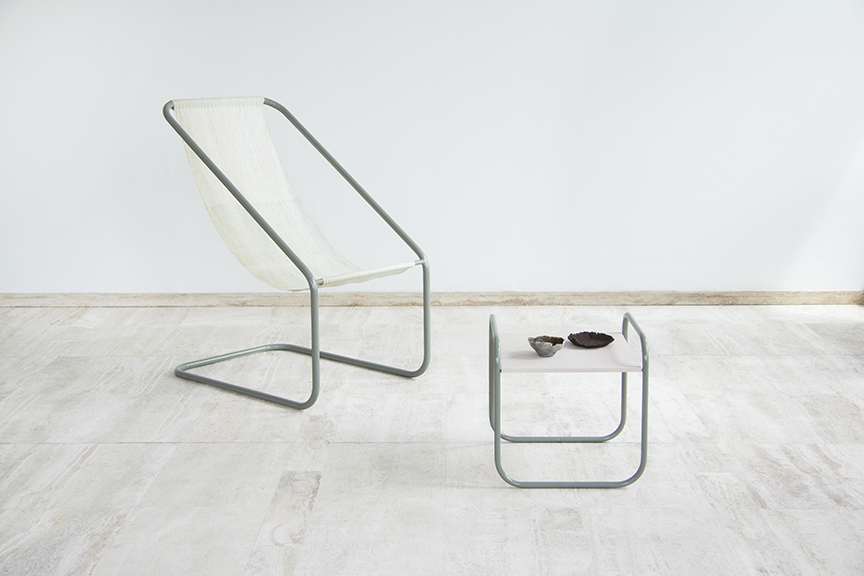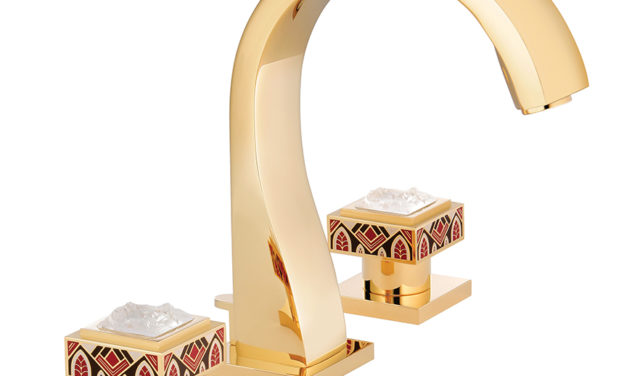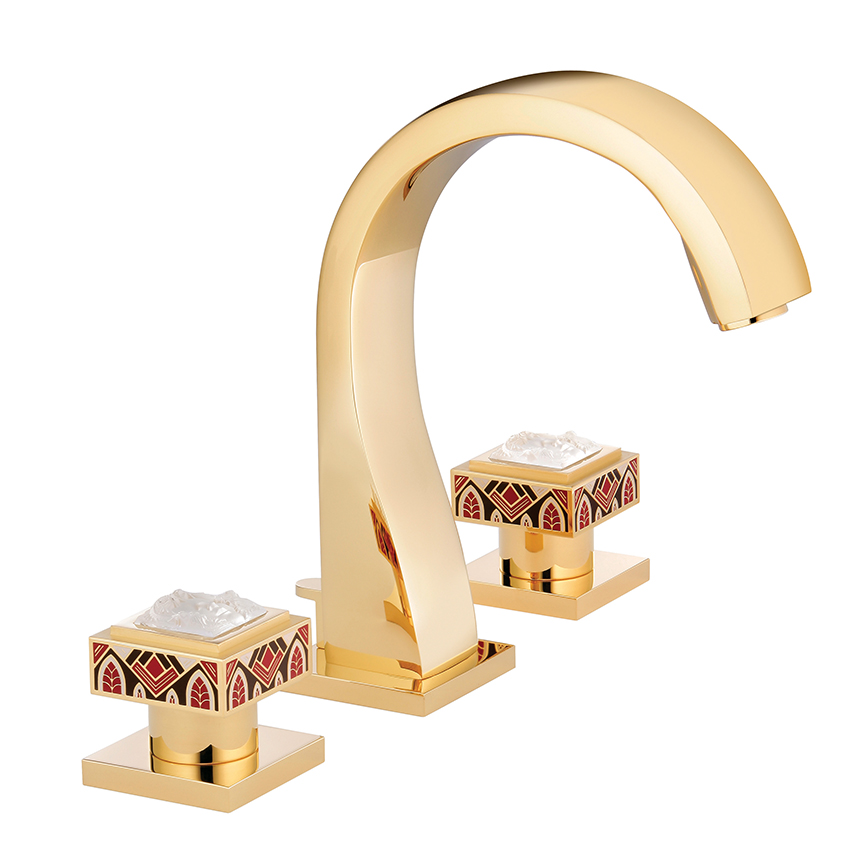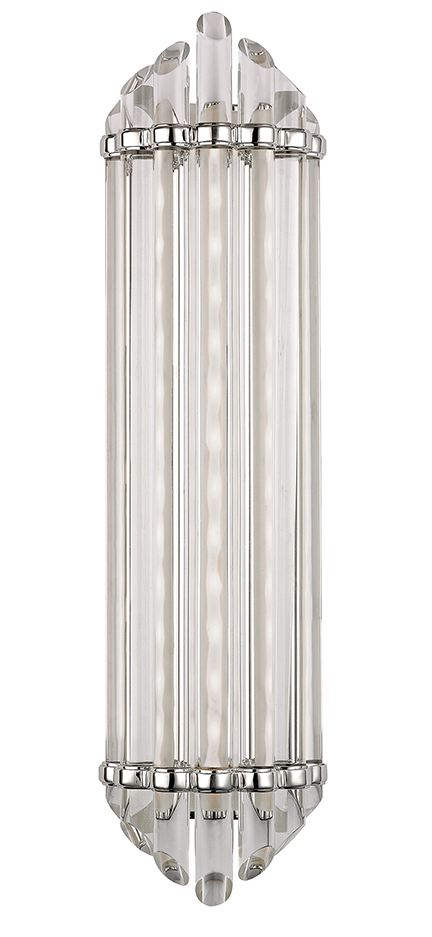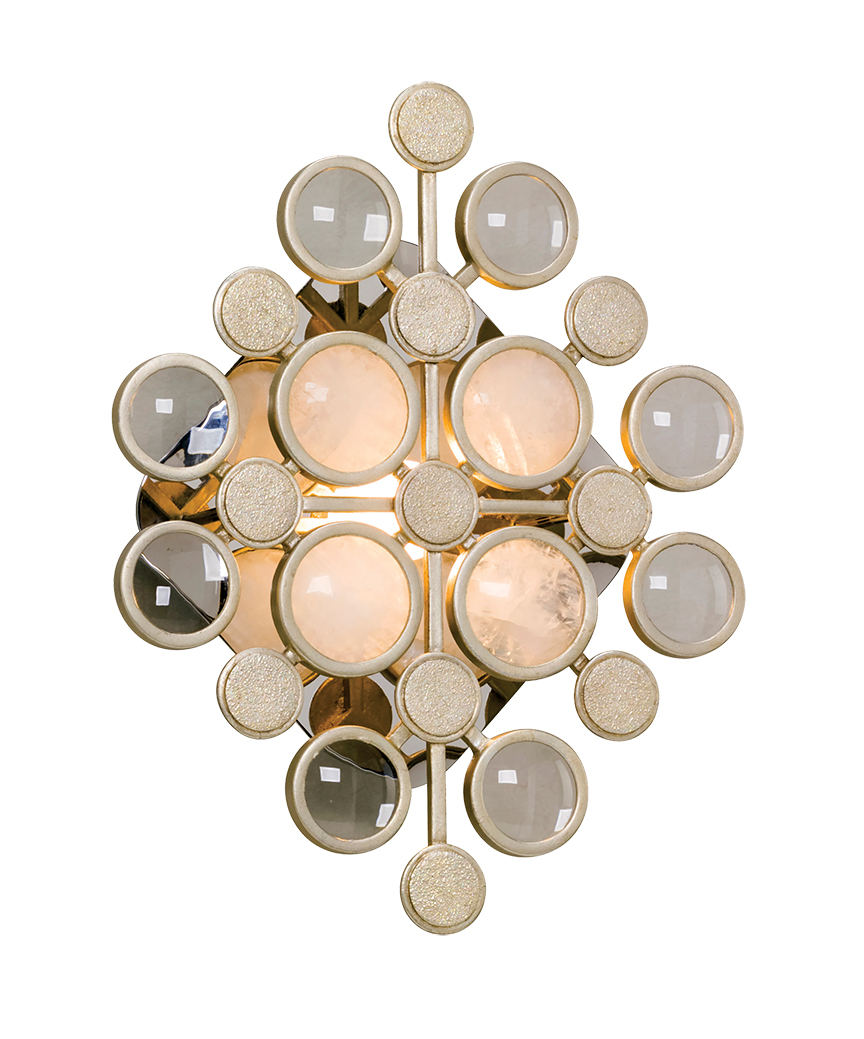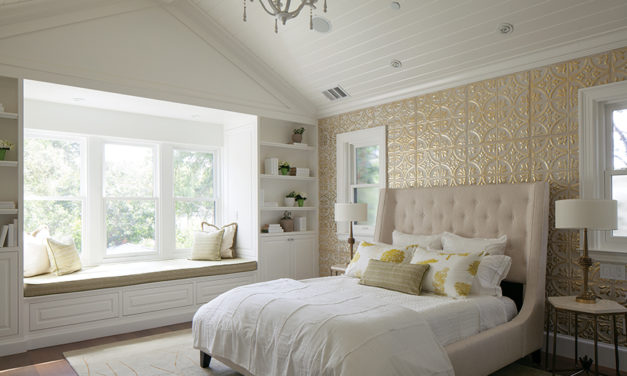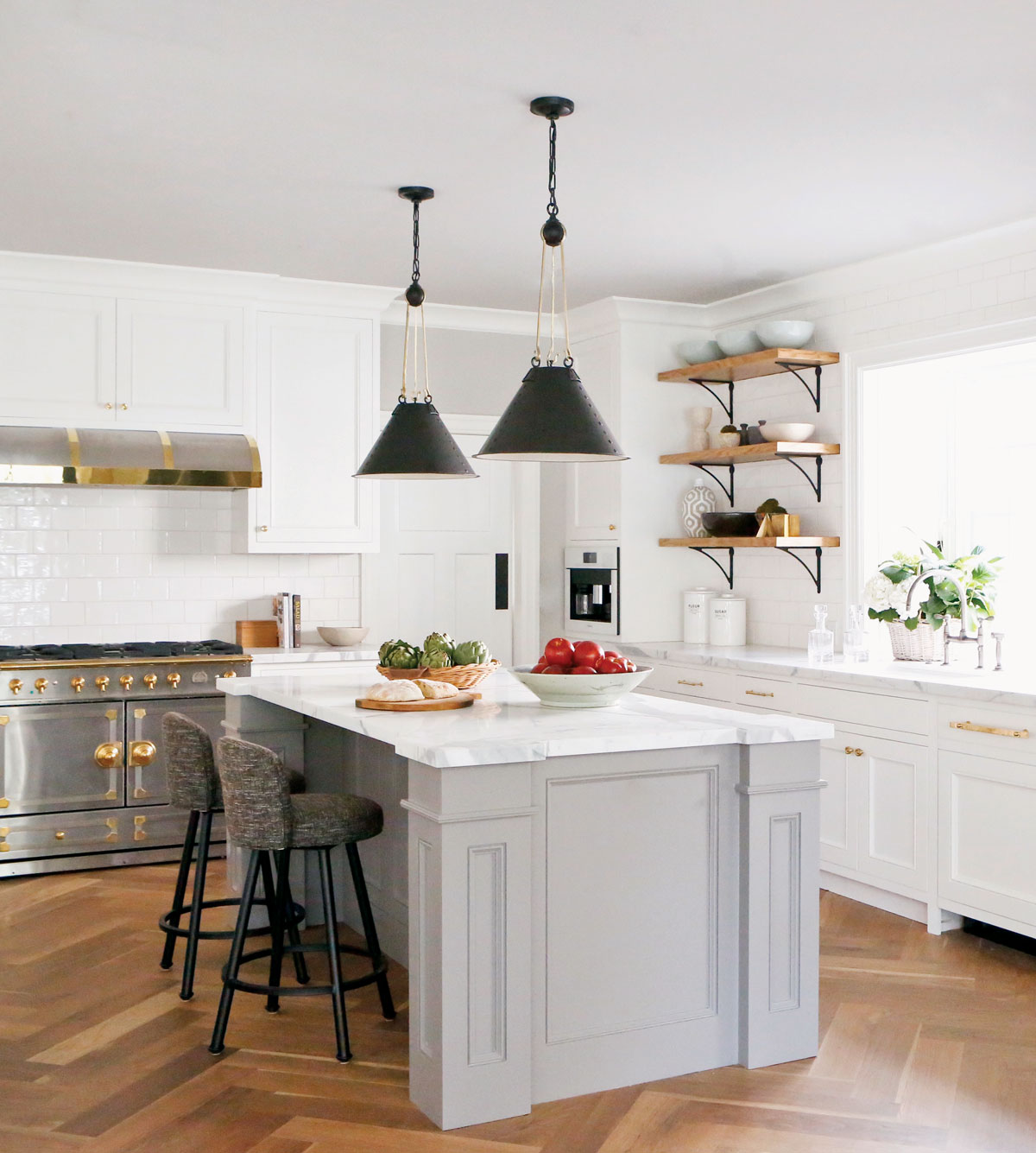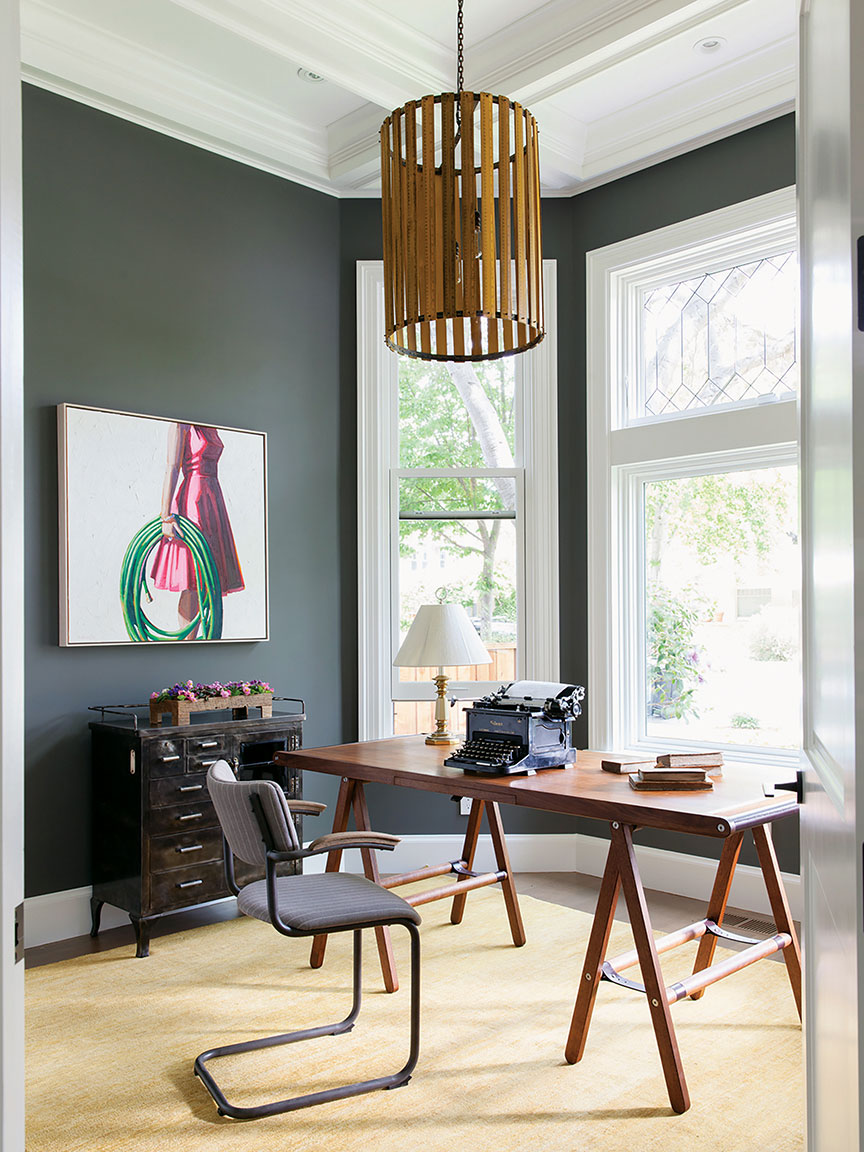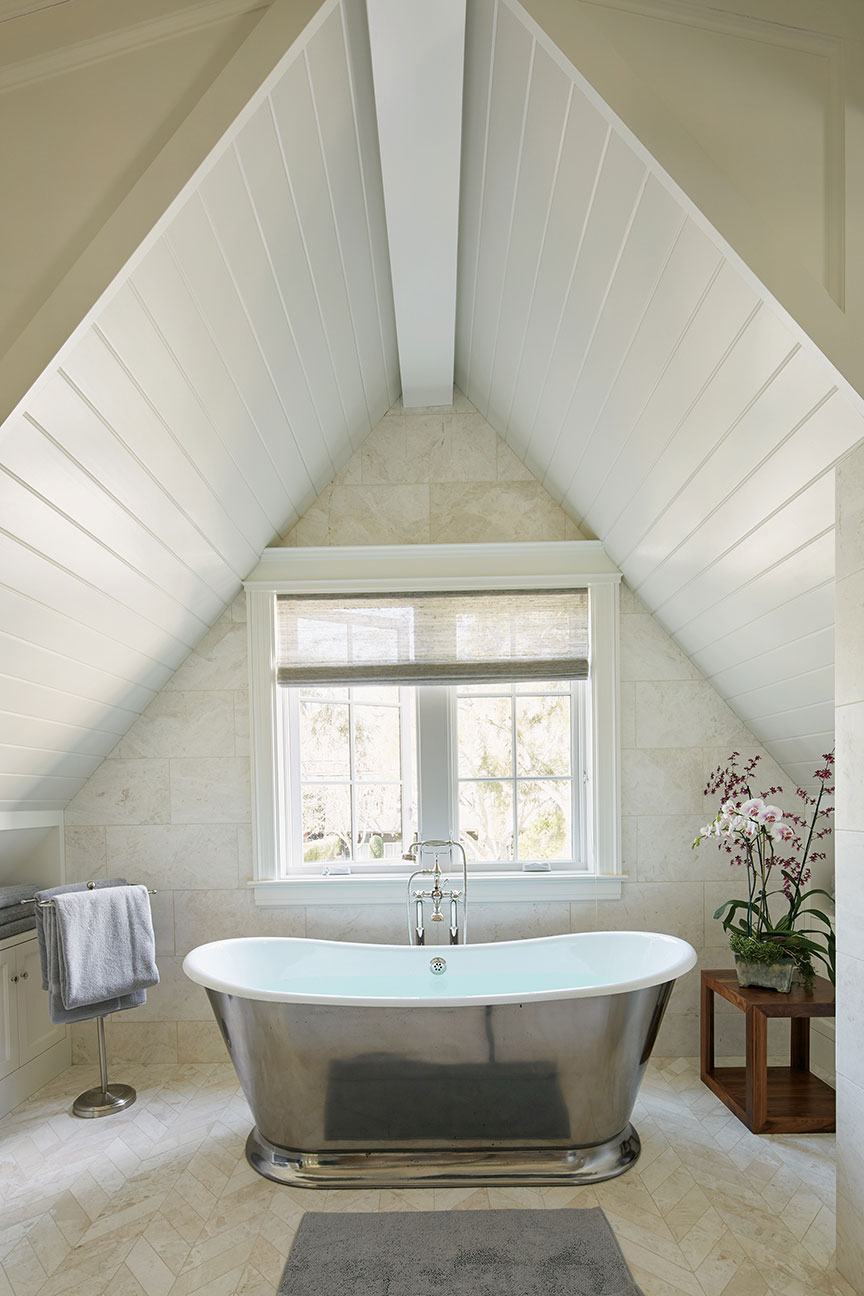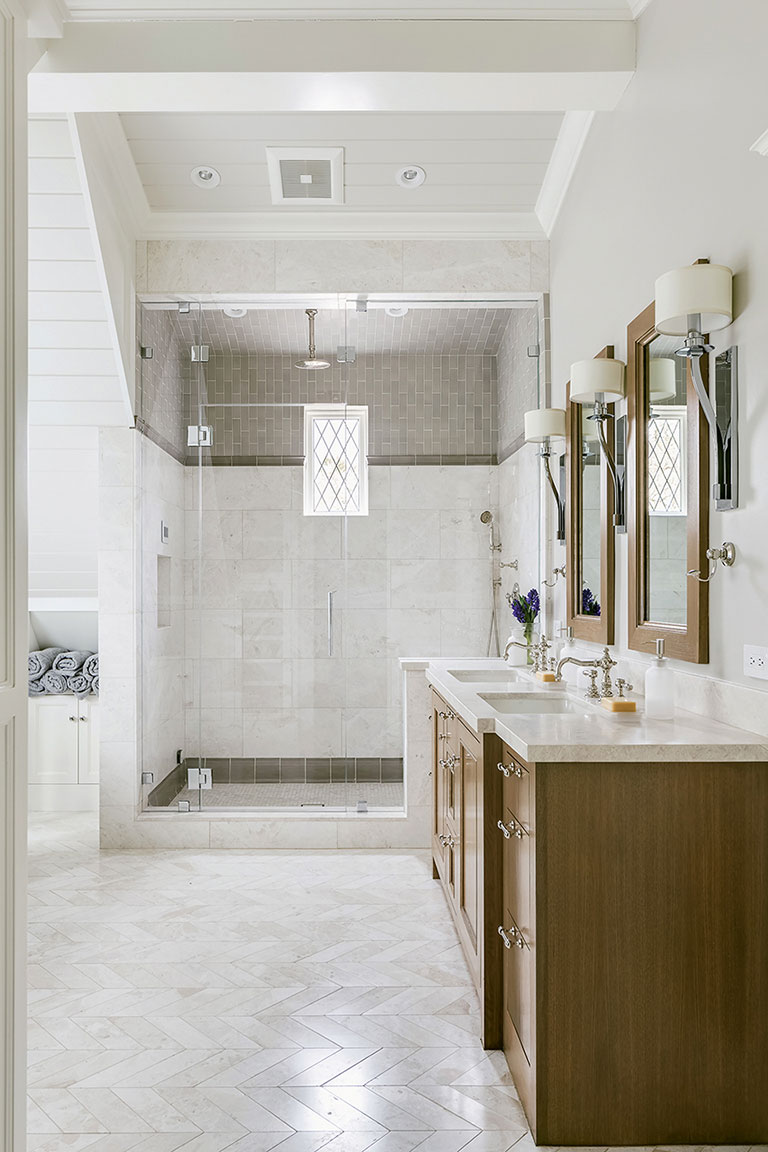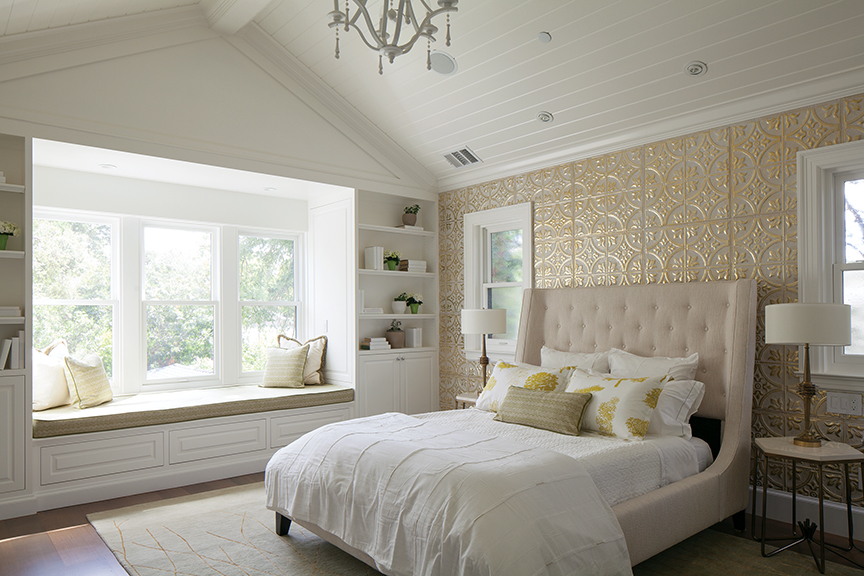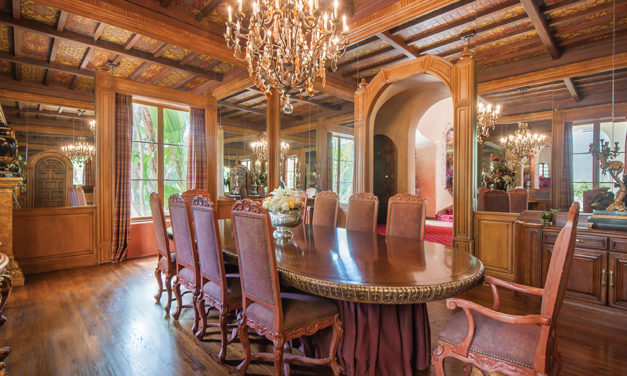Luxury sales may be surging, but behind the scenes another housing sector is undergoing a similar remarkable resurgence — renovation and home improvements.
By Camilla McLaughlin

Photo courtesy Tony Sutton
Renovations have always been a given in the luxury realm, and typically new owners make changes soon after the acquisition. Today, recent homebuyers aren’t the only ones spiffing up homes. With the number of properties on the market at historic lows in many places, some homeowners are opting to stay put and upgrade their current abodes, moving walls, redoing kitchens and baths, finishing basements and adding outdoor enhancements.
“The remodeling market continues to benefit from a stronger housing market and, in particular, solid gains in house prices, which are encouraging owners to make larger investments in their homes,” says Chris Herbert, managing director of the Joint Center for Housing Studies (JCHS) at Harvard.
Research from HomeAdvisor shows that owners who have been in their homes for six years or less still spend the most on home improvement, followed by those who have owned for 11 years or more. Projects can range from a simple refresh and updated finishes to a complete revision of the layout.
“Typically, the incentive is around entertaining and functionality. The two go hand in hand and often when the family areas, such as the kitchen/family room, aren’t working, the house will undergo a renovation,” says Christine Markatos Lowe, owner of Christine Markatos Design in Santa Monica, California. Life events can also trigger a revamp. “Some of our clients have redone the entire house to refresh it upon a milestone such as children leaving for college,” Lowe says.
Increasingly, long-term owners are making improvements with a future sale in mind. But learning that their well-maintained home will not resonate architecturally with buyer expectations comes as a “news flash” to some, says Tony Sutton, president of Est Est Inc., an award-winning design firm in Arizona. “Potential sellers need to understand what they have to do to bring their homes up to speed, so there will be no objections or obstacles to a reasonable offer,” he says. Sutton illustrates with the example of a home with $400,000 worth of cabinetry. “There is nothing wrong with it, except the color is ugly. The buyer is going to come in and say, ‘I have to replace all of the cabinets,’ and I tell potential sellers, ‘they are going to ding you several hundred thousand dollars.’” Sutton suggests refinishing all cabinets in the house to look current and eliminate that objection. It might cost $20,000 or $30,000, but, in the end, he says you could get an additional $350,000 out of the house.
In other instances, when specific features might not be up to buyer expectations and owners don’t want to make the financial outlay, Lisa Adams, owner of LA Closet Design, suggests having plans drawn up and a rendering completed. She uses the example of an $11 million listing. “Everyone who walked through the house was clearly excited about the property, but when they got to the master closet you could tell it was anticlimactic,” she explains. The owners opted to have a new closet designed along with detailed renderings.
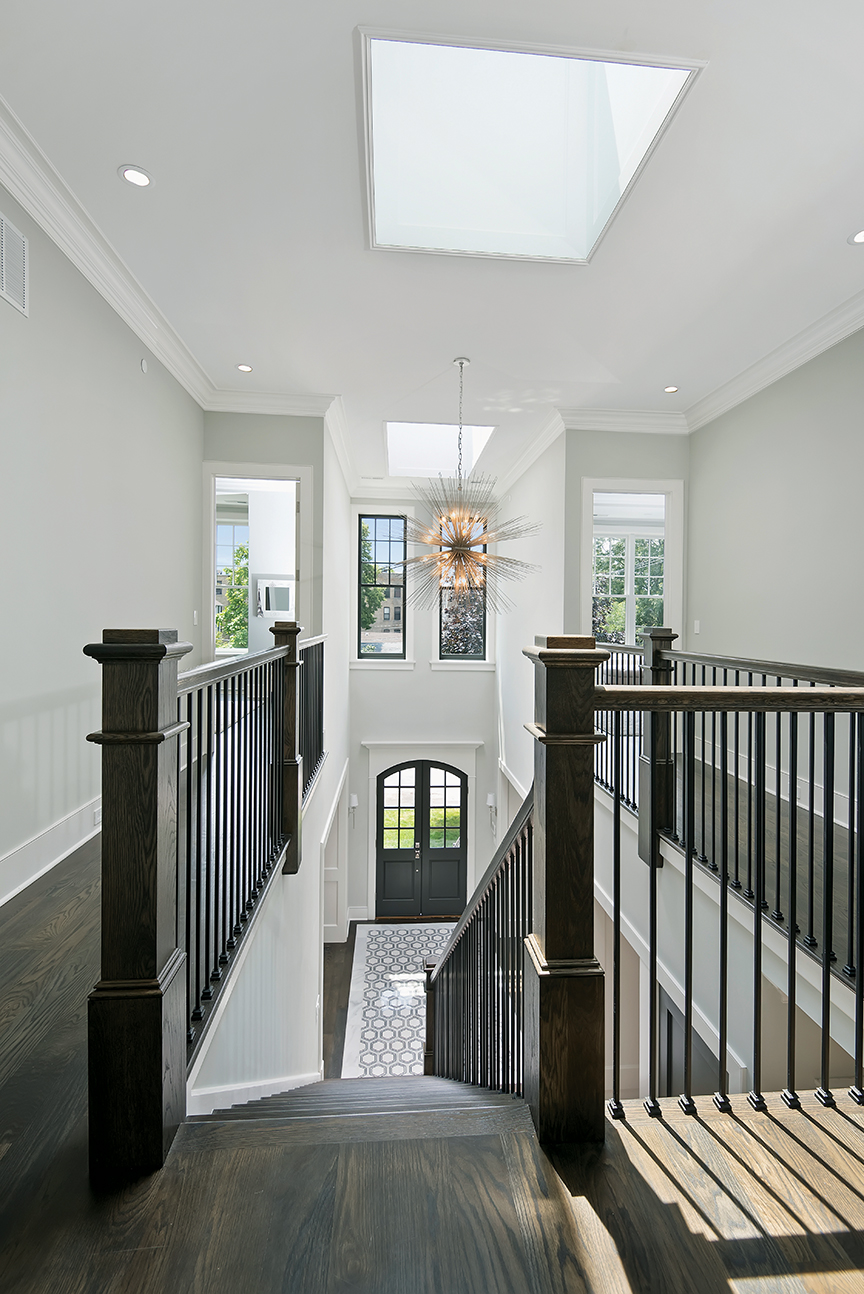
A gracious entry sets the stage for this renovated 7,000-square-foot residence, formerly a four-unit apartment building.
Photo courtesy Barnett Homes
If you don’t want to carve out that space now, think about doing a rendering. People can’t visualize it, and they want to see that space exists.” Adams notes that builders often use her renderings for high-end spec homes. “Renderings show the potential of the space, how the corners will be accessed, what the ceiling will be like.”
This year, JCHS estimates owners will spend almost $20 billion more on home improvement than the previous year, with a total outlay well in excess of $300 billion. But the actual number of dollars devoted to improving and rehabbing homes tallies much higher — the JCHS figure does not account for spending by developers or builders. Developers, who in the past often focused on commercial to residential conversions, are now looking at existing homes, not to tear down, but to improve and refocus.
Recent research from HomeAdvisor shows in the last 12 months the average homeowner is spending nearly 60 percent more on home projects than they did during the prior 12 months, and two-thirds of those surveyed expect to spend as much or more in the next year. “We’ve seen a 7-percent increase in total nationwide expenditures on home improvement — with homeowners tackling bigger-ticket projects like kitchen and bath remodels and exterior renovations,” observes Brad Hunter, chief economist for HomeAdvisor.
In addition to data on home improvement projects in the 10 wealthiest counties in the country, at the request of “The High End,” HomeAdvisor also took a look at requests submitted by affluent individuals in metros such as Los Angeles, Washington, D.C. and Seattle. In every location, bathroom remodels topped the list, while requests for projects such as stone restoration and polishing or the construction of built-in furniture exceeded demand from the general population by 100 percent or more. “People living in high-income areas are spending more on their homes and making more lifestyle improvements. These are purely discretionary projects, which are typical of owners of luxury homes,” observes Hunter. High-end consumers also order computer networking and wiring 188 percent more often than average consumers. Not only is this an indication of demand for smart home features, but also it reflects an increase in telecommuting.
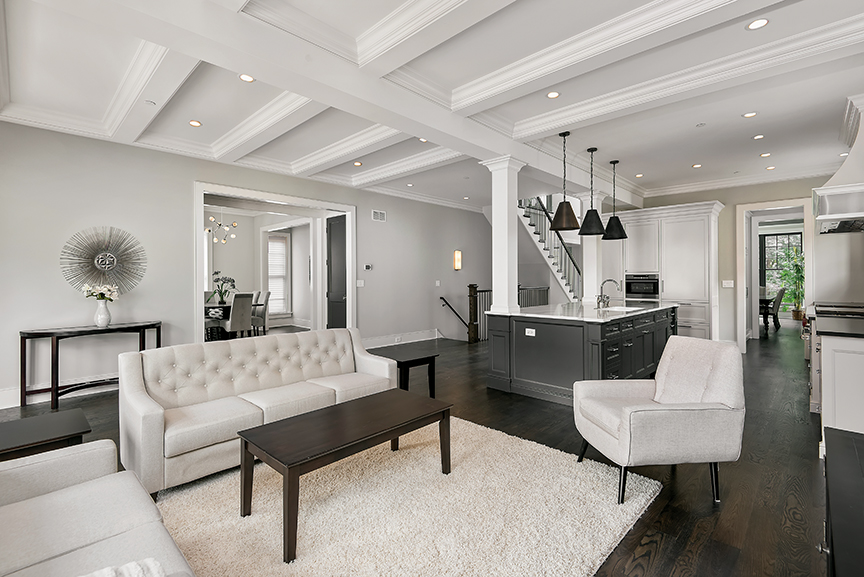
The new kitchen and family room reflect the classic but modern ambiance of the interior of this Chicago home.
Photo courtesy Barnett Homes
Overall, high earners were more likely to hire designers, interior decorators and architects, which Hunter says is “strong evidence of homeowners — especially high-income homeowners in appreciating neighborhoods — taking on more large-scale projects,” including additions and whole-home remodels. Basement remodels are becoming popular once again, even in places where basements are not customary. Again, this is another instance of homeowners looking for found space that can be turned into usable square footage. Real estate agents in a range of locales, including California, confirm this is a growing trend, with more lower levels outfitted as entertaining spaces.
Other projects that track much higher among affluent consumers include installing brick and stone driveways and floors, pergolas, walkways, and custom shrubbery, all indications of how closely outdoor enhancements and outdoor living align with upscale lifestyles.
“When you identify a budget, you have to understand what the threshold of pain is likely going to be and you figure out how to judiciously spend those dollars to get the best bang for your buck,” Sutton explains, referring to a designer’s job. In climates like Arizona, you can double the square footage of livability in many homes just by taking advantage of access to the outside.”
In Los Angeles, affluent consumers are 10 times more likely to use experts to install and remove holiday lighting, while upscale owners in D.C. are six times more likely than average consumers to install outdoor lighting. There are just two of the differences uncovered in our in-depth look at renovation projects undertaken by high-income homeowners in some of most expensive metros in the country, thanks to HomeAdvisor.
There is also a surprising similarity among cities, especially considering differences in the age of the housing stock and climate. From Boston to Los Angeles, bathroom remodels top the list of most requested home improvements, along with kitchen remodels. Everywhere, too, outdoor living enhancements rank high, whether the location is Chicago or Seattle.
In Washington, D.C. luxury owners are twice as likely as overall consumers to add a pool. Pools, and pool renovations, rank high in L.A., where affluent consumers are more than three times as likely to consult a landscape designers or an architect, while D.C. denizens call on an interior designer three times more often than consumers in general. Basement remodels are big in Chicago, Boston and D.C.
©istockphoto.com/IPGGutenbergUKLtd
Many designers and almost all builder developers work closely with agents to be sure their plans and finishes are current and aligned with what buyers are looking for today. Paul Williamson, principal of the development firm True Craft Residential, works with agents to determine floor plans — whether, for example, one of the bedrooms should be turned into an office — as well as for input on finishes.
After a design is finished, Williamson says he often will take it back to the agent to get their approval. In this sense, he says, they represent potential buyers, the generic buyer. In this function, the expertise of an agent becomes obvious. “A good agent knows their market well enough to provide an accurate report of buyer preferences. You can tell, because they give you specific examples,” he says. A less skilled agent doesn’t have that in-depth knowledge of the market, so they can’t speak to a particular home type or neighborhood.
Top agents, on the other hand, have designers, architects and builders they call on to consult with prospective buyers regarding potential renovations of a property. Tony Sutton of design firm Est Est Inc., says he works with a number of groups, including agents, to educate potential sellers on current market preferences. Sutton compares architects, designers and buildings as essential elements in a renovation equation, but real estate agents are often an important addition to this mix.
©istockphoto.com/FlairImages
“We completely reposition the house. We move walls around, pull ceilings and do small changes to the exterior facade. We have a clearly defined process and a literal check list of hundreds of items that we go through before construction,” explains Paul Williamson, principal of the development firm True Craft Residential, of the process his company follows to rehab a property, many of which are considered high end.
“Where I see most homeowners get bogged down, is they tend to want to start before they get the final plans done and before a full specification.” In the end, this approach proves more costly and time consuming.
It is important to key into the surrounding aesthetic, says Ken Fixler, president of Barnett Homes, a Chicago-based luxury builder specializing in new construction as well as rehabbing older houses. Often the exterior of these homes will reflect the character of the location, while interiors resonate with current preferences with open-concept floor plans that are light and bright. Designers say the mix of exteriors in harmony with the local vernacular combined with up-to-date modern or transitional interiors can be found in almost every region.
In locations where homeowner associations have strict rules regarding work in condos, it is important for consumers and potential buyers to be aware of restrictions regarding work on interiors other than simple tasks like interior painting.
In Naples, Florida, single-family renovations deliver “more bang for your renovation buck,” says Scott Kish, principal of KTS Group, a custom design-build firm in Naples. But condo renovations are in demand because a majority of the units in the city were built decades ago and new buildings are not being developed. Most HOAs limit the number of renovations per year and typically work can’t begin before May 1 or after November 15, at the latest.
“Most newcomers don’t have a clue. If they don’t start prepping a job in January, there is no way you can get everything done within that time frame, he explains. Meanwhile, in places like New Jersey, the opposite is true — condos on the ocean may prevent work from being done between Memorial Day and Labor Day.
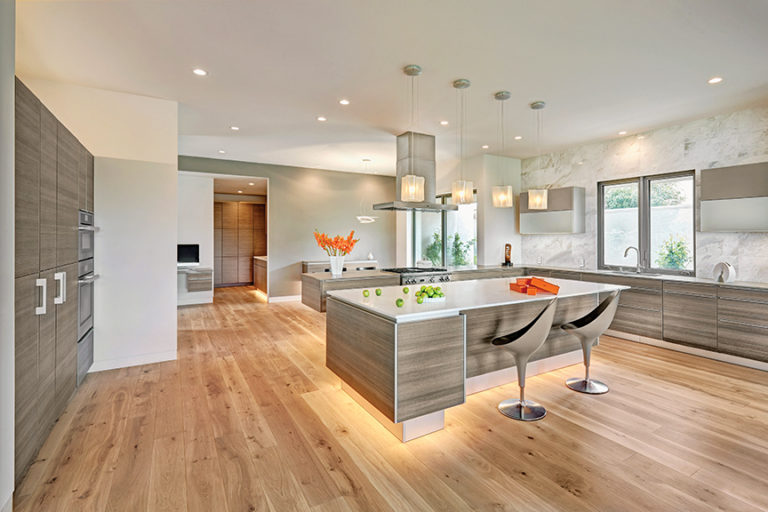 Kitchen designed by Nar Bustamante. NAR Fine Carpentry/Fred Donham photographer; Photo courtesy NKBA.
Kitchen designed by Nar Bustamante. NAR Fine Carpentry/Fred Donham photographer; Photo courtesy NKBA.


